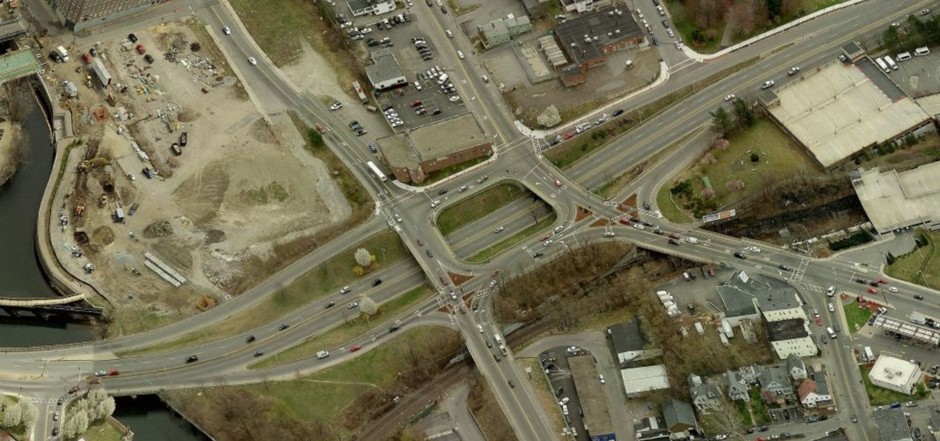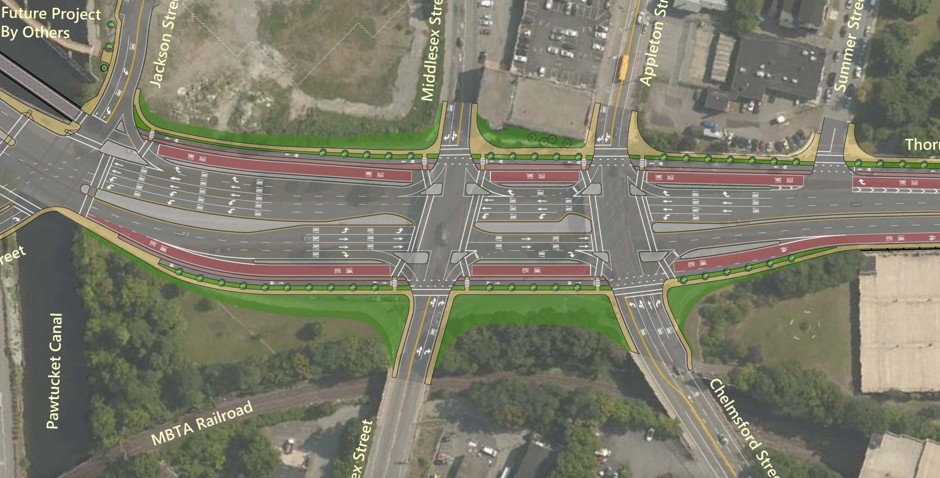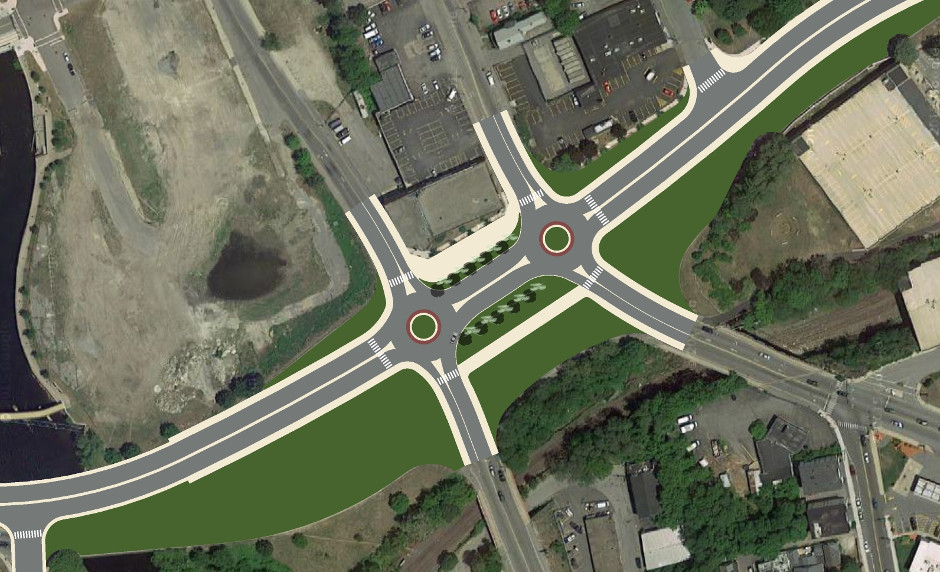Arsteca.net
Lord Overpass to Boulevard
An alternative take on the boulevard plan for the Lord Overpass, Lowell, MA.
May 4, 2016
A CityLab.com published article (April 22, 2016) by Jeff Speck describes a plan of Lowell, MA to restructure a freeway-style section of Thorndike St—the Lord Overpass—into a boulevard. The current condition (Figure 1) includes a section of depressed road and requisite ramps to connect with two cross streets. The total width of the roadways and spacings is so wide that 4 intersections are needed to handle the 2 cross streets.

Lowell's planned boulevard proposal (Figure 2), which the article states has been broadly embraced by the city and public, shows Thorndike St raised up to grade to facilitate a boulevard environment. The resulting design shows a very wide boulevard. In the article, Mr. Speck points out a number of design details that should be employed to make such a wide boulevard more functional as well as more attractive. His point is that there are existing models of successful boulevards, and designers should consult them to test their own. I agree.

However, I was drawn by other considerations regarding the proposed design:
- The new boulevard is very wide, incorporating turning lanes, bus lanes, bicycle lanes, etc. Yet, Thorndike St (except this section) and the cross street are all regular sized, maximum 4-lane city streets, generally developed up to the sidewalk. They cannot be widened.
- What is the point of creating such a complex boulevard section if it will be limited to a 1/2 mile? It won't speed up traffic if it's only a 1/2 mile in length and reverts back to a standard city street.
- Dedicated bus lanes and bike lanes are fairly useless if they run only 1/2 mile. (Perhaps a road diet on the rest of Thorndike Street can provide for bike lanes.)
- My guiding thought of city streets is that none should have more than 4 travel lanes. This is because more lanes and/or limited access roads will only draw/collect more traffic, which in turn leads to creating additional arterial roads and/or one-way streets in a desperate attempt to receive or disperse the traffic efficiently near junctions along the way. Big roads within cities seem to be the creators of congestion and compromised street design. Hence, don't build city streets with more than 4 travel lanes.
- The weak link in traffic is virtually never insufficient lanes; it is slow intersections, which can be sped up by converting to roundabouts. If traffic volume is high, rather than add lanes, upgrade the street with more efficient junctions, and upgrade parallel streets equally to absorb a proportionate share of the traffic.
Now, full disclosure, I am not intimately familiar with this crossing or Lowell; I am not an engineer; and I am guided only by the article and Google Earth. It is quite possible I'm missing important facts. However, It seems to me that this section of Thorndike St should be rebuilt as the street it is everywhere else, a 4-lane street of standard width—or whatever lanes are planned for the future. If that is done, the street will be far more pedestrian-friendly, and will provide a far more attractive environment for development along its edges. In addition, the 4 signaled intersections can be reduced to 2 roundabouts to make traffic flow more smoothly, safely, and at nearly twice the volume. There is no need for extra turning lanes because roundabouts don't require them. The overall environment would feel much calmer, and some of the reclaimed areas could be used to create a piazza-like, partly green, pedestrian-friendly space (Figure 3).

If nearby cross streets to the left or to the right of the new junction are busy enough, adding roundabouts to those crossings may be advisable in order to insure steady flow of traffic away from the new junction (for engineers to determine).
If traffic volume were really an issue, an alternative would be to cover existing Thorndike St creating a tunnel, then bring the ramps around and together forming one road at each end which meet the same pair of roundabouts shown above. But, since a boulevard plan has been found acceptable, such alternative is apparently not needed.
Carlo Moneti
Syracuse
To comment, contact moneti ATT arsteca DOT net